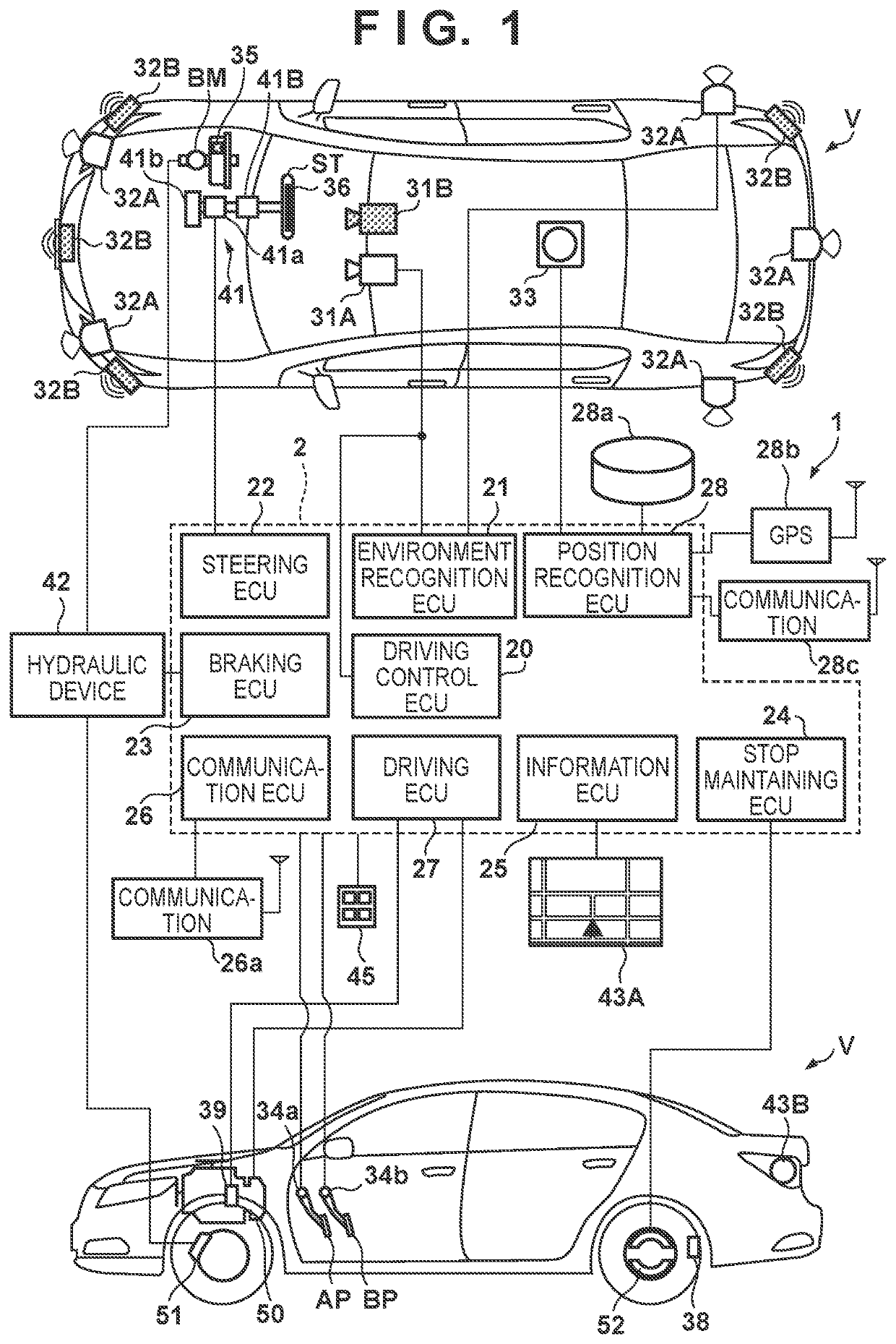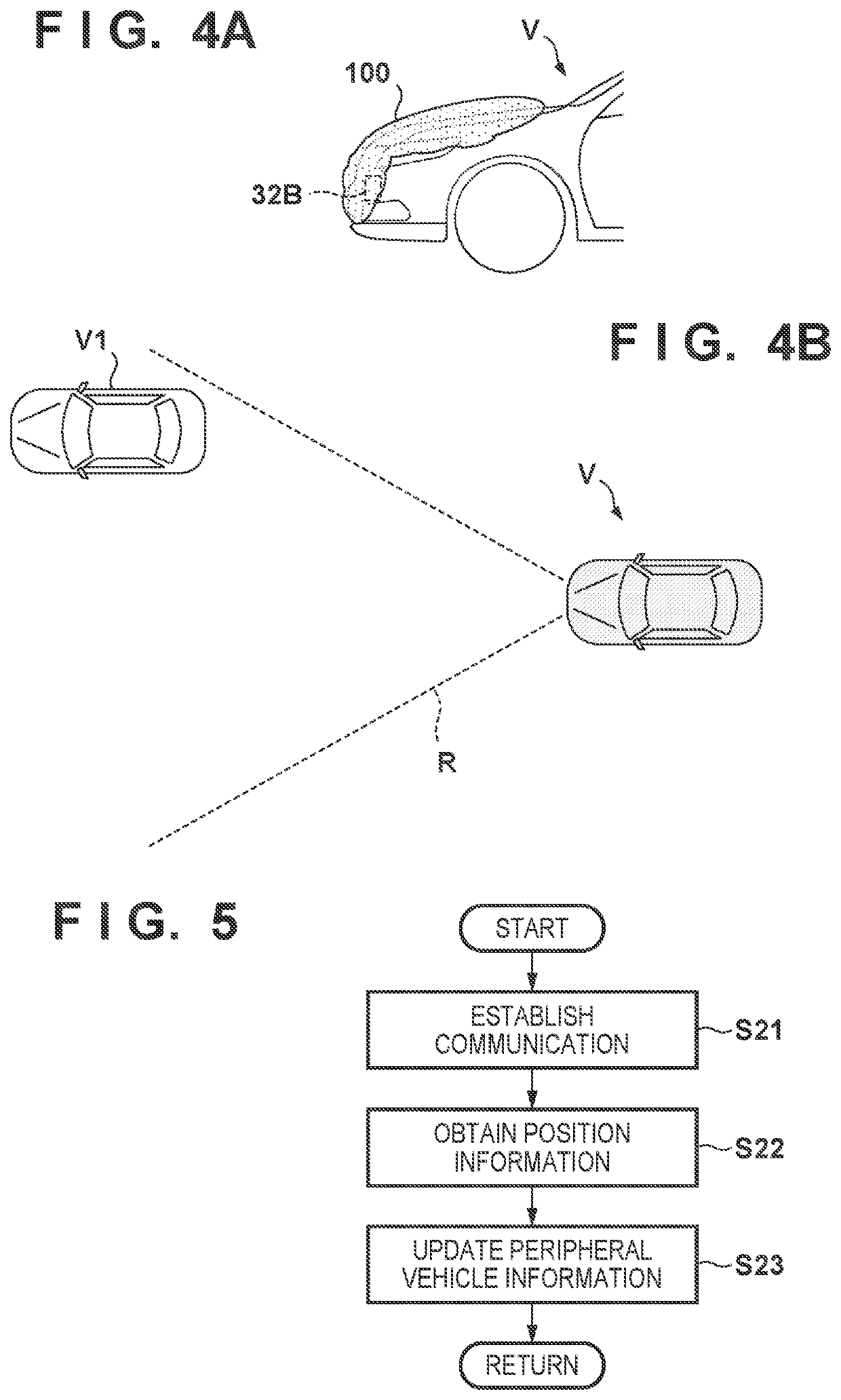Vehicle information processing apparatus
a technology for information processing and vehicles, applied in the field of vehicle information processing equipment, can solve the problems of wasting time, affecting the performance of sensors, and requiring too much time to make determinations, etc., and achieve the effect of reducing the time and determining the degradation of the performance of the sensor
- Summary
- Abstract
- Description
- Claims
- Application Information
AI Technical Summary
Benefits of technology
Problems solved by technology
Method used
Image
Examples
first embodiment
[0024]FIG. 1 is a block diagram of a vehicle V and a control apparatus (information processing apparatus) 1 according to an embodiment of the present invention. FIG. 1 shows the schematic arrangement of the vehicle V in a plan view and a side view. As an example, the vehicle V is a sedan-type four-wheeled passenger car.
[0025]The vehicle V according to this embodiment is, for example, a parallel-type hybrid vehicle. In this case, a power plant 50 that is a traveling driving unit configured to output a driving force to rotate the driving wheels of the vehicle V can include an internal combustion engine, a motor, and an automatic transmission. The motor can be used as a driving source configured to accelerate the vehicle V and can also be used as a power generator at the time of deceleration or the like (regenerative braking).
[0026]
[0027]The arrangement of the control apparatus 1 that is an onboard apparatus of the vehicle V will be described with reference to FIG. 1. The control appar...
second embodiment
[0064]In the processing of FIG. 6 of the first embodiment, a detection unit 32B is immediately set to “normal” (step S37) if it is determined that another vehicle is not present in a detection range R of the detection unit 32B in step S34. However, it is possible to consider a case in which another vehicle is not present by chance due to low traffic in the periphery of the self-vehicle V. Hence, if a state in which a target is not detected has continued for a predetermined time, it may be determined that the performance of the detection unit 32B has degraded. FIG. 7 is a flowchart showing this example and is an example of processing performed alternatively to the example of the processing of FIG. 6. Processes different from those of the example of the processing of FIG. 6 will be described.
[0065]If it is determined in step S34 that another vehicle is not present in the detection range R of the detection unit 32B, the process advances to step S38. In step S38, whether a state (target...
third embodiment
[0068]Although the first embodiment showed an example in which notification to an occupant is performed as the support processing of step S36, an obstacle removal unit may also be actuated. FIGS. 8A and 8B are views showing such an example.
[0069]A removal unit 101 of FIG. 8A is a washer that sprays a washer fluid. The removal unit 101 sprays, within the detection range of the detection unit 32B, water for washing on the surface (the bumper and its periphery in this example) of a vehicle V. This is effective for removing dust or mud if such dust or mud has adhered as an obstacle to the vehicle V.
[0070]A removal unit 102 of FIG. 8B is a heater that generates heat. The removal unit 102 is arranged inside the vehicle V so as to heat a component (the bumper and its periphery) of the vehicle V within the detection range of the detection unit 32B. This is effective for removing snow or ice when such snow or ice has adhered as an obstacle to the vehicle V.
PUM
 Login to View More
Login to View More Abstract
Description
Claims
Application Information
 Login to View More
Login to View More - R&D
- Intellectual Property
- Life Sciences
- Materials
- Tech Scout
- Unparalleled Data Quality
- Higher Quality Content
- 60% Fewer Hallucinations
Browse by: Latest US Patents, China's latest patents, Technical Efficacy Thesaurus, Application Domain, Technology Topic, Popular Technical Reports.
© 2025 PatSnap. All rights reserved.Legal|Privacy policy|Modern Slavery Act Transparency Statement|Sitemap|About US| Contact US: help@patsnap.com



